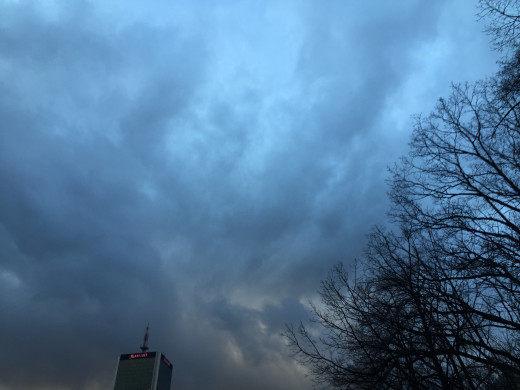Weather for Travel
Unpredictable Weather Events
One of the most vexing challenges often overlooked by travelers is the weather. Different weather conditions are not always on our mind. Checking weather forecasts provides only some indication of conditions at times. Local weather may also differ from what is in the weather report. Some parts of the world have unpredictable weather on a persistent basis while in other parts of the world weather patterns are changing. There are also new phenomena that have never been experienced.
There are predictable patterns of weather in some parts of the US such as the Western Coast that is currently experiencing drought. In this way, California is the most stable in terms of temperature and rainfall patterns. The most random weather in the US throughout the entire year occurs in Kansas City and Rapid City. The temperature may jump there anytime and odd storms appear in summer as well as winter.
In places such as London, there may be unusually warm temperature in January, yet there are cold snaps in June. This can cause unusual flowering seasons with insect infestations, such as a high number of spiders. When travelling to London in winter, travelers may need to be prepared that at the beginning or the end of winter there may be some unusual weather events that is also associated with different animal behavior. As such, there were more spiders during unusually warm days and spiders such as Daddys long legs were more often seen.
Cold places, such as Alaska experience unusually warm weather. On the other hand, dry places, including Texas suffer from flooding that also affected Ghana and Myanmar in 2015.
There are heat waves in otherwise relatively wet Western Europe. In New York and the US East Coast icy and stormy winters became a pattern. Storm lightnings that can appear in the middle of snowing became a new phenomena.
Contrasting weather ensues in dry places, with flooding occurring in one of the driest places that is the Atacama Desert in Chile in 2015. Heavy rainfalls also affected other dry areas in South America that year.
Cold temperatures of Northern Europe have eased during winter while there are unpredictable winds, storms and other weather patterns. Flooding occurs on a persistent basis in the Southern parts of the US and Australia but the most extreme and random weather patterns appear in the Northern Hemisphere. So-called atmospheric blocking is responsible for certain unpredictable weather events due to pressure system's inability to move.
The most severe impact of unpredictable weather events involves earthquakes. Although it is always difficult to predict when and where they will occur, the most affected region is in so called Ring of Fire. Chile seems to be the country with the heaviest earthquakes, but despite that the areas most frequented by tourists such as Atacama Desert in the north and Patagonia in the south are never affected despite their wide ranging reach. The country has also buildings appropriately constructed for these events.

Is there Good Weather For Travel?
Weather events can add additional pressure for travelers that may fail to prepare for various eventualities such as for example a freezing rain in Southern Quebec Canada. Hail the size of a golf ball can strike almost any time even in summer in various parts of Australia, except for Northern Territory. Other unpredictable patterns pertain to events such as El Nino.
How to prepare for such events may require more than just taking warm winter clothing that many end up being too warm or not sufficiently warm.
Even various weather applications may fail to supply the needed information even though the weather radars are updated every 15 minutes. For extreme weather events this may be too long. Travelers can face earthquakes even if they researched the places they visit. Some travelers may face problems such as inability to return to their home countries after flooding or other natural disasters.
Apart from standard weather information on iPhones, there are applications such as WeatherBug or Weather from NOAA for Android for emergency events.
Freezing temperatures of the North offer spectacular views of northern lights such as Aurora Borealis as well as nacreous clouds also called stratospheric clouds. Although they are impressive they also contribute to the destruction of the ozone layer.
While hurricanes and cyclones can be detected earlier with warnings issued before they have any impact earthquakes are most of the time unpredictable and dangerous. When traveling, it is not always obvious where a disaster may happen. The earthquake in Mexico in September 2017 proved to be impossible to predict delivering a widespread damage in 10 Mexican states that in some areas was comparable to bombardment. The man holding a Mexican flag amidst the ruin and destruction went viral, as Mexican people attempt to unite amidst the devastation.


Weather Changes in Europe
Weather in Europe can be unpredictable in the same way that it is in other parts of the world. Traditionally warm weather in Europe in August also can be interrupted by fires in countries such as Greece, Spain or France.
The warmest temperature in summer is in European cities such as Athens, Lisbon, Majorca, South of France, South of Spain and South of Italy. Western countries tend to be warmer and wetter than Central European countries that are also colder in winter.
In the same way, European weather in August 2014 experienced heavy rainfalls and floods in places such as Canary Islands or even in places such as Sweden. Flooding can occur not just during the spring, but also during winter or summer.
Nacreous clouds and Aurelis Borealis
Amazing clouds such as Aurelis Borealis can be observed in Northern skies. Some clouds such as Nacreous clouds that display a stunning range of colors that are unfortunately associated with empty ozone layers and climate changes.
Skypunch in Canada
Exploring Asia
While Asia is one of the most fascinating places to explore with Bali in Indonesia being popular, those venturing there often disregard phenomena such as volcanic eruptions. Although these events are infrequent and often disregarded by tourists when they finally occur they may cause disruptions and inability to travel or even leave.
The best time to travel to Indonesia or South Asia is during so called dry season when the weather is hotter but there is no rain. These parts of the world experience only two seasons dry and wet. During the wet season excessive rain may disrupt moving around although it may be easier to cope with for those from Northern countries. Taking appropriate clothing can also be ill considered, as not all light clothing is appropriate. For example, scarce clothing such as short sleeves or shorts may cause sunburns while they are not welcome by those with Muslim traditions. Certain fabric even though light may stick to the skin in hot conditions.
© 2015 ainezk








